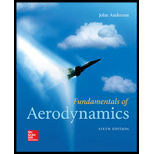
A
Want to see the full answer?
Check out a sample textbook solution
Chapter 9 Solutions
Fundamentals of Aerodynamics
Additional Engineering Textbook Solutions
HEAT+MASS TRANSFER:FUND.+APPL.
Introduction to Heat Transfer
Fox and McDonald's Introduction to Fluid Mechanics
Manufacturing Engineering & Technology
Vector Mechanics for Engineers: Statics
INTERNATIONAL EDITION---Engineering Mechanics: Statics, 14th edition (SI unit)
- Air flowing isentropically through a converging nozzle discharges to the atmosphere at standard sea level conditions. At the section where the absolute pressure is 179 kPa, the temperature is 39˚C and the air speed is 177 m/s. Determine the nozzle throat pressure.arrow_forwardAn aircraft is flying at supersonic speed. At a component of an aircraft where the flow is perpendicular (normalshock), the density ratio is 5. Solve for: a.Mach Number Downstream b. Pressure Ratio c. Temperature Ratio d. Mach Number upstreamarrow_forwardA normal shock produced by an explosion propagate at a constant velocity of 450 m/s into still air of 100 kPa and 23 °C. The ratio of stagnation pressure upstream the shock to stagnation pressure of the gas flow behind the wave isarrow_forward
- If there are no shock waves and the pressure at one ductsection in Fig. is 55.5 kPa, what is the velocity atthat section?(a) 166 m/s, (b) 232 m/s, (c) 554 m/s, (d ) 706 m/s,(e) 774 m/sarrow_forwardThe velocity and temperature behind a normal shock wave are 329 m/s and 1500 K, respectively. Calculate the velocity in front of the shock wave.arrow_forwardThe converging-diverging flow domain is shown in Figure 1. The inlet diameter is 0.2 m, the throat diameter is 0.15 m, and the outlet diameter is 0.24 m. The axial distance from the inlet to the throat is 0.30 m—the same as the axial distance from the throat to the outlet. At the inlet section, the stagnation pressure P0 is set to 220 kPa (absolute), while the stagnation temperature T0, at the inlet is set to 300 K.arrow_forward
- A large reservoir at 20 °C and 800 kPa is used to fill a smallinsulated tank through a converging–diverging nozzle with1-cm2 throat area and 1.66-cm2 exit area. The small tankhas a volume of 1 m3 and is initially at 20 °C and 100 kPa. Estimate the elapsed time when (a) shock waves begin toappear inside the nozzle and (b) the mass flow begins todrop below its maximum value.arrow_forwardThe pressure ratio across a normal shock wave in air is 4.5. What are the Mach numbers in front of and behind the wave? What are the density and temperature ratios across the wave?arrow_forwardConsider the isentropic flow through a supersonic wind-tunnel nozzle. The reservoir properties are T0= 500 K and p0 = 10 atm. If p (corresponds to your assigned altitude) at the nozzle exit, calculate the exit temperature and density.ASSIGNED ALTITUDE = 9522 ftarrow_forward
- Air at 20°C and 1 atm flow past the flat plate in Fig.under laminar conditions. There are two equally spacedpitot stagnation tubes, each placed 2 mm from the wall.The manometer fluid is water at 20°C. If U = 15 m/s andL = 50 cm, determine the values of the manometer readingsh1 and h2, in mm.arrow_forwardAt an altitude of 7 km, air is travelling at a supersonic speed and decelerated by a normal shock wave which causes a density ratio of 0.325 across the wave. Compute: a) M₁ b) V₁ c) V d) M₂ e) V₂ f) P2 g) p₂ h) Tarrow_forwardThe reservoir pressure and temperature for a convergent-divergent nozzleare 5 atm and 520◦R, respectively. The flow is expanded isentropically tosupersonic speed at the nozzle exit. If the exit-to-throat area ratio is 2.193,calculate the following properties at the exit: Me, pe, Te, ρe, ue, p0,e, T0,e.arrow_forward
 Elements Of ElectromagneticsMechanical EngineeringISBN:9780190698614Author:Sadiku, Matthew N. O.Publisher:Oxford University Press
Elements Of ElectromagneticsMechanical EngineeringISBN:9780190698614Author:Sadiku, Matthew N. O.Publisher:Oxford University Press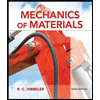 Mechanics of Materials (10th Edition)Mechanical EngineeringISBN:9780134319650Author:Russell C. HibbelerPublisher:PEARSON
Mechanics of Materials (10th Edition)Mechanical EngineeringISBN:9780134319650Author:Russell C. HibbelerPublisher:PEARSON Thermodynamics: An Engineering ApproachMechanical EngineeringISBN:9781259822674Author:Yunus A. Cengel Dr., Michael A. BolesPublisher:McGraw-Hill Education
Thermodynamics: An Engineering ApproachMechanical EngineeringISBN:9781259822674Author:Yunus A. Cengel Dr., Michael A. BolesPublisher:McGraw-Hill Education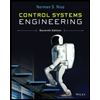 Control Systems EngineeringMechanical EngineeringISBN:9781118170519Author:Norman S. NisePublisher:WILEY
Control Systems EngineeringMechanical EngineeringISBN:9781118170519Author:Norman S. NisePublisher:WILEY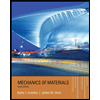 Mechanics of Materials (MindTap Course List)Mechanical EngineeringISBN:9781337093347Author:Barry J. Goodno, James M. GerePublisher:Cengage Learning
Mechanics of Materials (MindTap Course List)Mechanical EngineeringISBN:9781337093347Author:Barry J. Goodno, James M. GerePublisher:Cengage Learning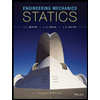 Engineering Mechanics: StaticsMechanical EngineeringISBN:9781118807330Author:James L. Meriam, L. G. Kraige, J. N. BoltonPublisher:WILEY
Engineering Mechanics: StaticsMechanical EngineeringISBN:9781118807330Author:James L. Meriam, L. G. Kraige, J. N. BoltonPublisher:WILEY





